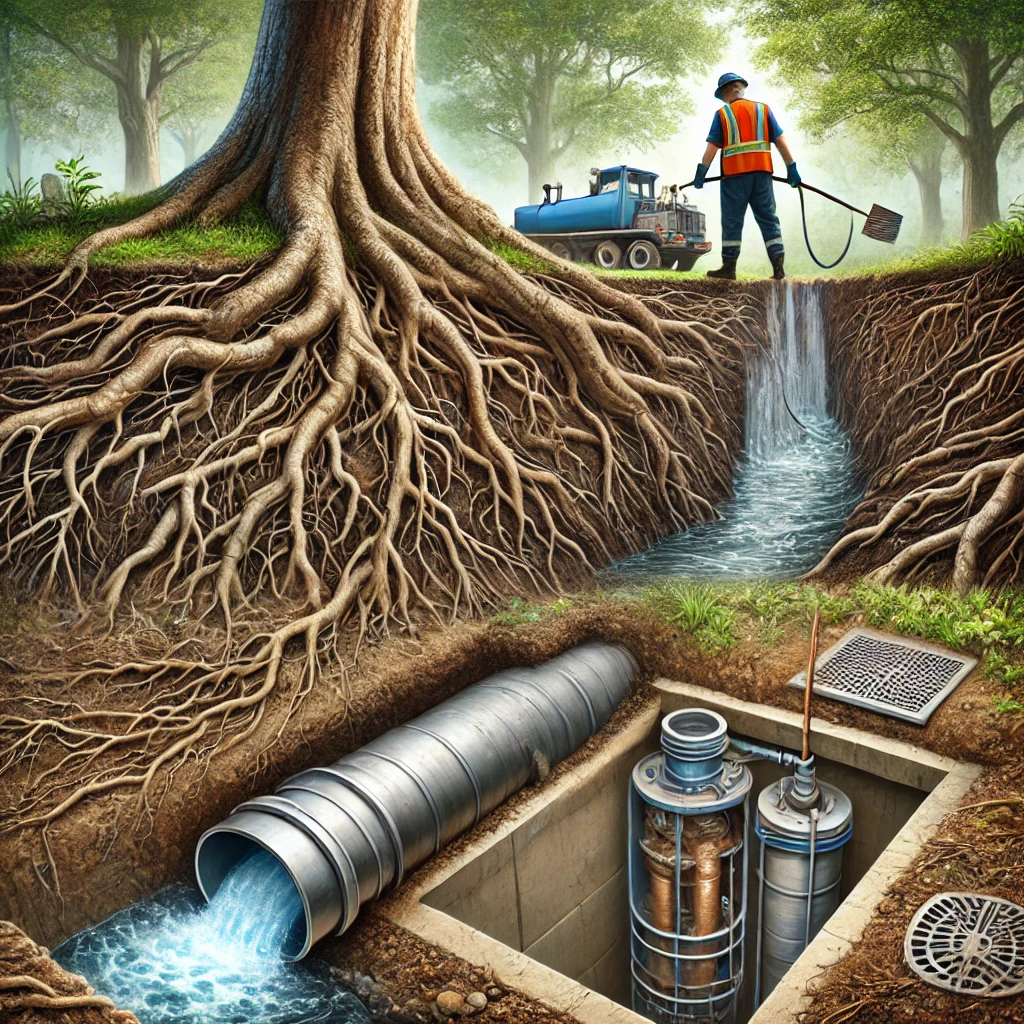Short answer? Yes! Tree roots are one of the sneakiest causes of septic system problems. If you’ve ever wondered about tree root damage to septic systems, here’s everything you need to know to protect your tank and pipes.
Why Are Tree Roots a Problem?
Tree roots are like nature’s explorers—they grow toward water and nutrients. Your septic tank and drain lines are full of both, making them an irresistible target. Over time, roots can:
- Crack or break pipes.
- Block the flow of wastewater.
- Damage the walls of your septic tank.
How Tree Root Damage Happens
1. Roots Find Small Cracks
Even a tiny crack or loose joint in your pipes can let roots sneak in. Once inside, they grow bigger and block the flow.
2. Roots Wrap Around Pipes
Some roots grow around pipes, putting pressure on them until they crack or collapse.
3. Drain Field Flooding
If roots invade your drain field, they can clog the soil, stopping wastewater from filtering properly. This can lead to backups and bad smells.
Signs of Tree Root Damage to Septic Systems
Watch out for these warning signs:
- Slow Drains: Roots might be blocking your pipes.
- Soggy Spots in Your Yard: This could mean your drain field isn’t working properly.
- Bad Smells: A root-clogged system can lead to sewage backups or leaks.
- Frequent Backups: If your system clogs often, roots could be the culprit.
How to Prevent Tree Root Damage
1. Choose the Right Trees
Some trees are more likely to cause problems than others. Avoid planting these near your septic system:
- Willow
- Maple
- Oak
Instead, choose smaller, slower-growing trees or shrubs with shallow root systems.
2. Know Where Your System Is
Before planting anything, find out where your septic tank and drain field are located. Keep trees and large plants at least 20-30 feet away.
3. Install a Root Barrier
A professional can install a barrier between your septic system and nearby trees to keep roots away.
4. Schedule Regular Inspections
A septic professional can check for early signs of root damage during routine maintenance. Catching problems early saves time and money.
What to Do If You Have Root Damage
- Call a Professional:
DIY fixes for tree root damage to septic systems aren’t safe or effective. A septic expert can assess the problem and recommend solutions. - Remove the Roots:
In some cases, professionals can clear roots using hydro jetting or mechanical tools without digging up your yard. - Repair or Replace Pipes:
If roots have cracked or collapsed pipes, they’ll need to be repaired or replaced. - Protect Your System Moving Forward:
After fixing the damage, take steps to prevent future root problems.
The Bottom Line
Tree root damage to septic systems is a serious issue, but it’s also preventable. By choosing the right plants, keeping your system clear, and staying on top of maintenance, you can avoid costly repairs and keep your septic system working smoothly.
Keep the roots out, and your system will thank you. Simple, right?

